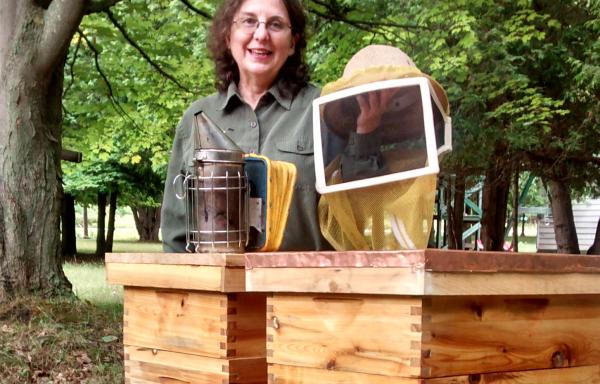
Nutrient management is a major concern for America’s dairy farmers, but they can’t always have a serious conversation about it with people who aren’t in the industry. In fact, one Connecticut farm has found the path to producing a new product from composted cow manure to be liberally paved with “poo puns.”
Matthew Freund embarked on a quest to create a biodegradable seed pot after hearing the idea presented in a 1995 meeting of the Canaan Valley Agricultural Cooperative. The proposal was actually made in jest during a brainstorming session of the local producers’ group.
“An employee of the state department of ag said ‘why don’t you just make a flowerpot out of it?’” said daughter Amanda Freund. “She just threw it on the table as an example of out of the box thinking.”
That throwaway comment planted the seed for a new business venture as Matthew thought about the peat pots his wife used for growing vegetables in their Litchfield County farm market and garden center. The more he considered the concept, the more convinced he became that he could create a similar item from the solid byproduct of their methane digester.
“We found some patents for flowerpots from the 1800s, but they killed plants,” said Freund. “They were using raw manure, and it was a little bit strong for the roots. Digested manure is more benign. You change that nitrogen from nitrate to nitrite and it is much easier for the plants to absorb.”
He created a temporary lab in the farmhouse kitchen to experiment with different formulas for a container made from the manure fibers. The quest to deliver a proof of concept involved a lot of trial and error and the original prototype sat on their kitchen table Lazy Susan for years while the family explored options for producing the cartons that would become CowPots.
“Through dumb luck, we found a guy up in Canada who said, ‘Hey, I can show you how to do that,’ with type two pulp molding,” he said. “We sent him barrels of cow manure to turn into flowerpots. He sent them back to us and gave us contacts in the pulp molding industry. We ended up finding a little prototype machine and spent eight years developing the formula.”
Amanda started working on the CowPots project after coming home from a Peace Corps assignment overseas and has been spearheading the sales and marketing ever since. The family first secured a $700 New England Sustainable Agriculture Research and Education (SARE) grant to help them move from prototype to actual production.
“That first grant was a big deal for us,” said Amanda. “It proved someone actually believed in us.”
The application process can be a challenge for producers like the Freunds because they don’t have a background in grant writing. Berkshire Agricultural Ventures (BAV) helped to fill that gap and make flexible financial and technical resources more available to local farms and food businesses. The family worked with a BAV consultant to secure a $250,000 Value Added Producer Grant from USDA Rural Development to keep the project moving forward.
“We’ve been working with RD since the early 2000’s,” added Ben Freund, who co-owns the operation with brother Matthew. “We’ve probably received in the neighborhood of 10 grants. You guys are very creative and know how to get us what we need.”
CowPots are a hit in horticulture circles and are now being sold across the U.S. and Canada. A microgreens grower recently placed an order for 70 pallets (50,000) of trays to reduce the labor costs for washing/sterilizing plastic containers and the CowPots team regularly receives requests for custom items.
“From the beginning, we saw a clear need to offer renewable alternatives to plastics that were made in America,” said Amanda. “VAPG provided critical funding to help us move the operation along more quickly.”
The Freunds have developed prototypes for items like packaging corners, skeets, golf tees and survey disks using everything from rudimentary drawings to detailed computer-aided design and drafting (CADD) renderings. Each die costs between $15,000 and $25,000 to produce, so the customer needs to be committed to the concept.
Amanda also continues to explore new markets for the biodegradable containers now produced on a seasonal basis (fall through spring) with the goal of securing enough orders for year-round production. That critical step should help them bring costs down to make the biodegradable option more comparable to plastics and competing biodegradables on the market.
“For just about every pound of milk our cows give, we get an equal amount of manure,” Amanda said. “When he [Matthew] initially presented the idea to industry people, it was hard not to laugh at it, but he was saying ‘This is what I imagine as a way to better manage this byproduct on our farm and add value to it.’”

